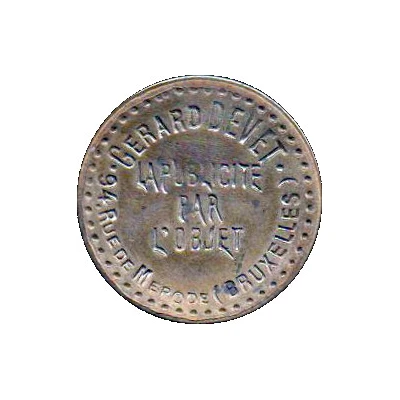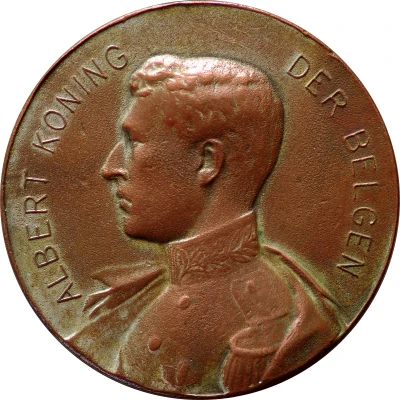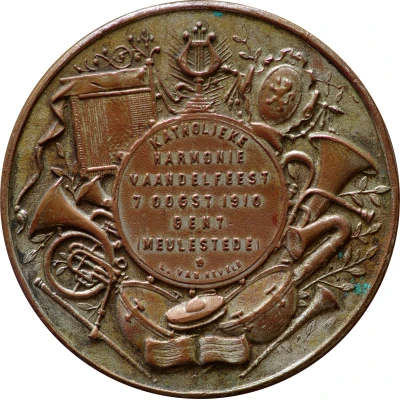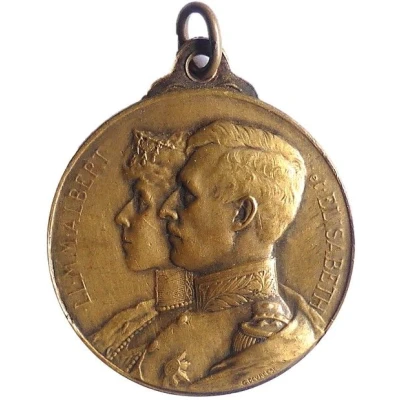
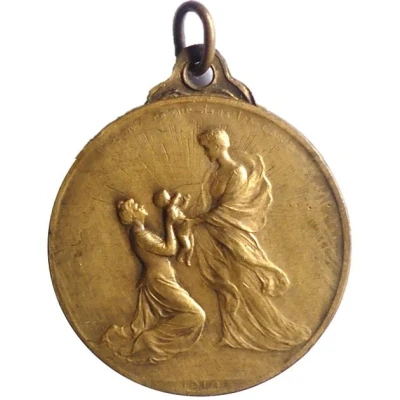

Medal - Albert and Elisabeth
1910 year| Bronze | 10.30 g | 28.2 mm |
| Location | Belgium |
|---|---|
| King | Albert I (1909-1934) |
| Type | Medals › Commemorative medals |
| Year | 1910 |
| Composition | Bronze |
| Weight | 10.30 g |
| Diameter | 28.2 mm |
| Thickness | 2.4 mm |
| Shape | Round with a loop |
| Orientation | Medal alignment ↑↑ |
| Updated | 2024-11-12 |
| Numista | N#271047 |
|---|---|
| Rarity index | 94% |
Reverse
The Queen (with her characteristic chignon) presents a baby to Goodness, against a radiant background.
Lettering:
La Bonté règne dans les Coeurs
1910
Engraver: Godefroid Devreese
Edge
Plain
Comment
What does 1910 represent?
For the royal couple, who were married on October 2, 1900, 1910 was not linked to a notorious family event, as the reverse might suggest: Leopold (future King Leopold III) was born in 1901, Charles (Regent after the Royal Question) in 1903 and Marie-José (later Queen of Italy) in 1906. Albert ascended the throne on the death of his uncle on December 17, 1909...
https://fr.wikipedia.org/wiki/Albert_Ier_(roi_des_Belges)
The motto "La Bonté règne dans les Coeurs" ("Goodness reigns in the hearts") would rather refer to the Universal Exhibition held in Brussels in 1910.
"1910 was a year of international relations. The Universal Exhibition was held in Brussels that year, and was a remarkable success. The new sovereigns made official visits to neighboring countries: France, Austria, Luxembourg and the Netherlands. On October 10, 1910, King Albert and Queen Elisabeth received the first official visit from a head of state under the new reign: German Emperor Wilhelm II and the Empress visited Belgium. On this occasion, observers noted the renewed cordiality between the two sovereign houses, as relations with the Hohenzollerns had become somewhat strained at the end of Leopold II's reign. In turn, the Belgian sovereigns made official visits to Germany."
https://fr.wikipedia.org/wiki/%C3%89lisabeth_en_Bavi%C3%A8re_(1876-1965)

